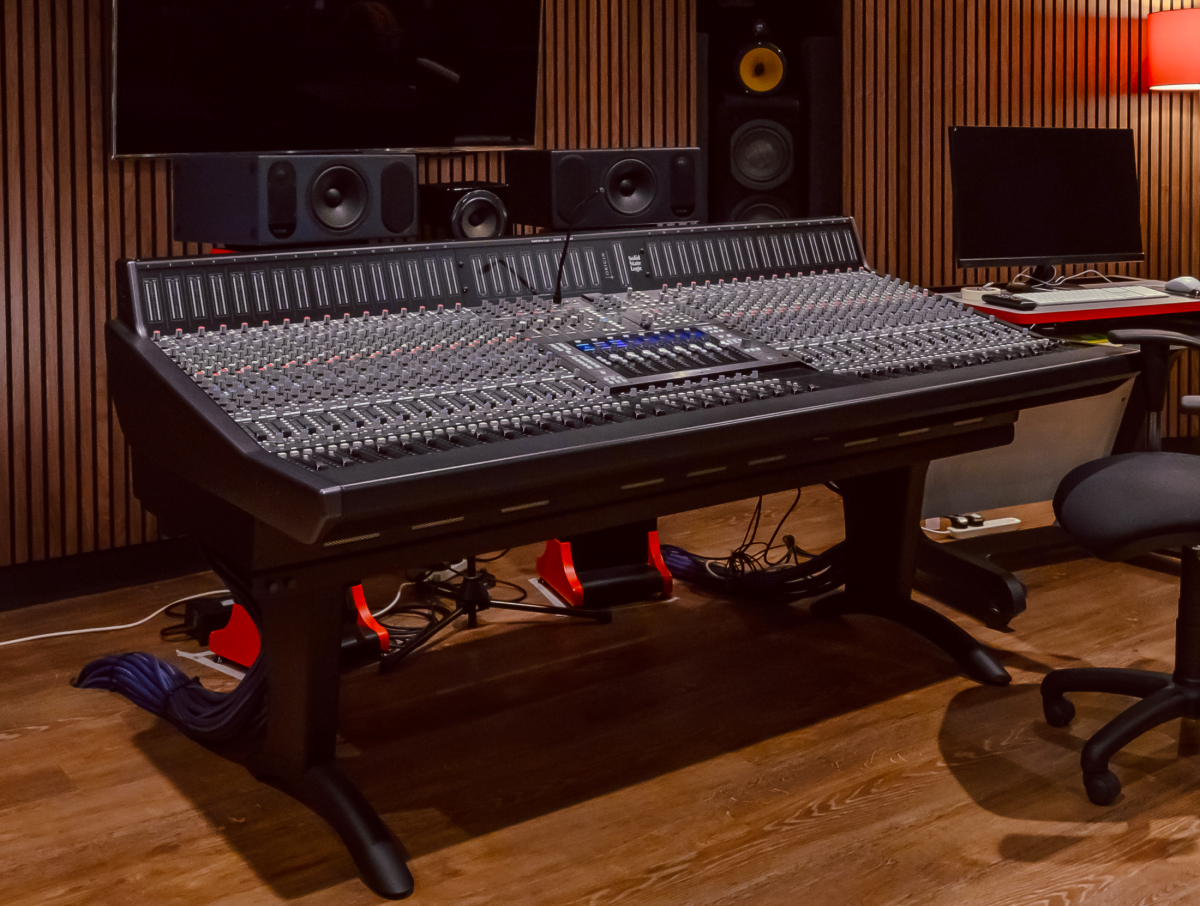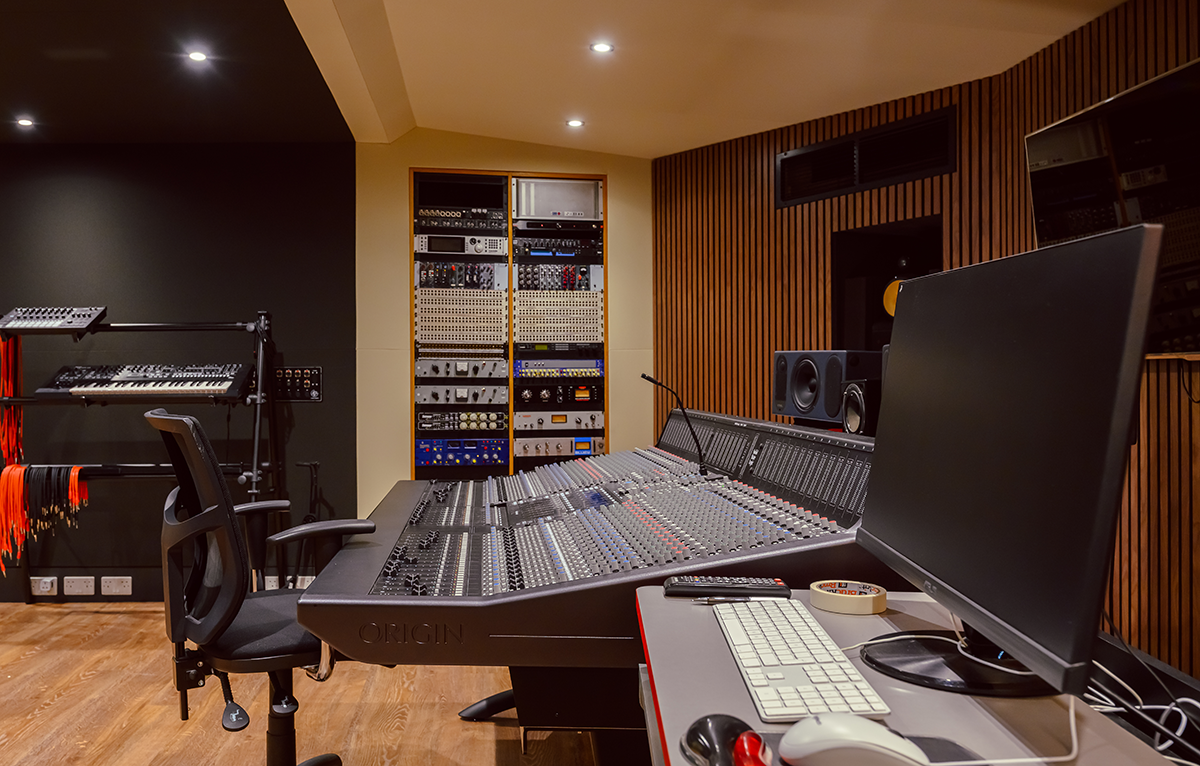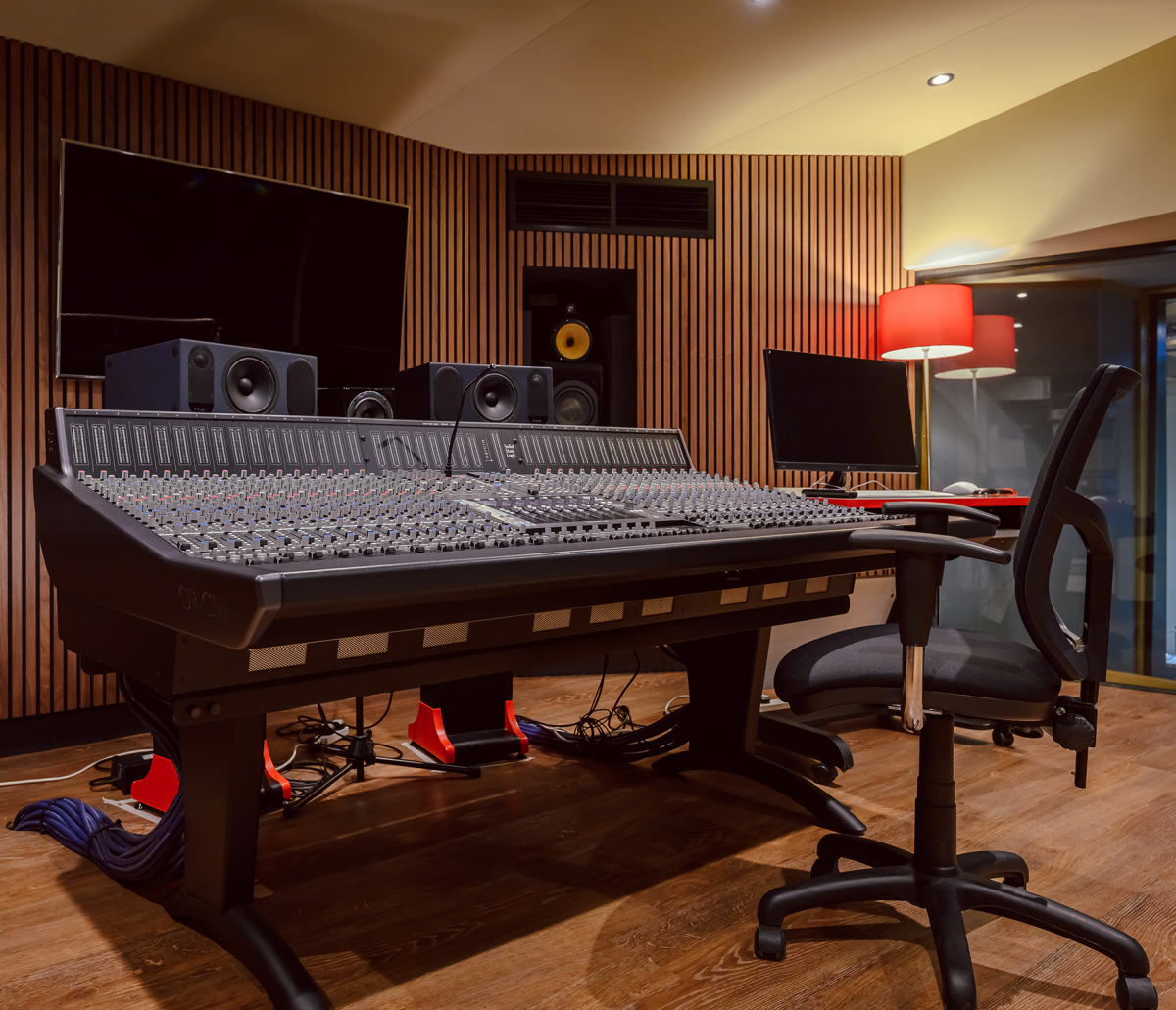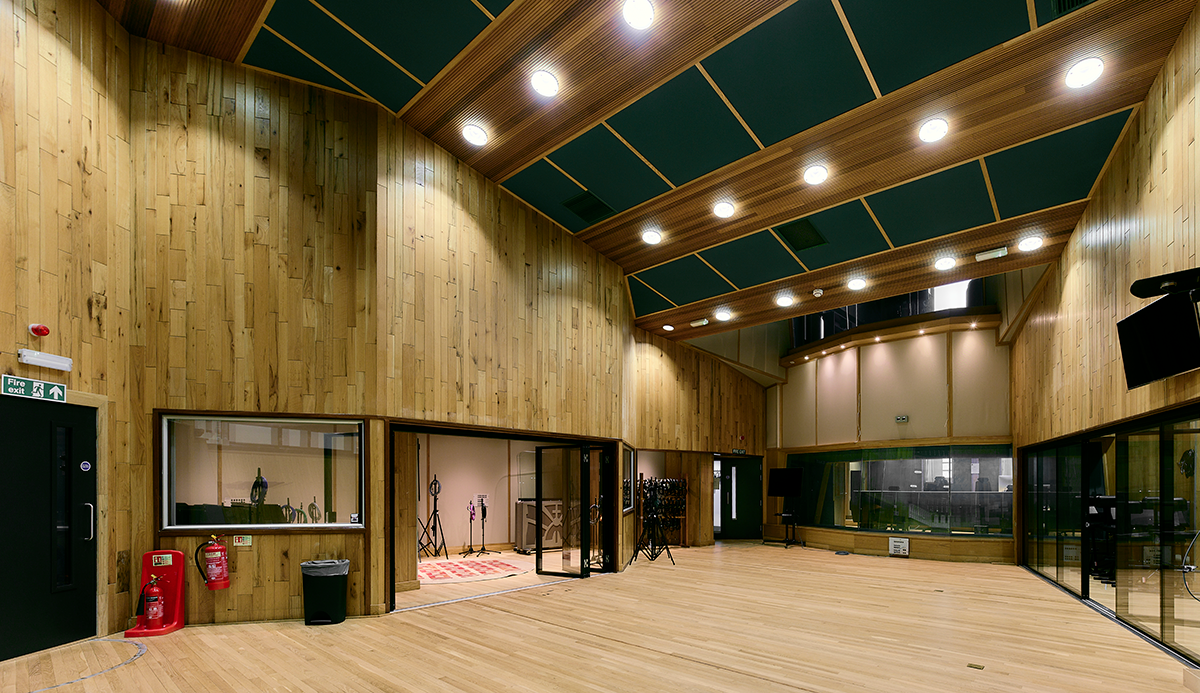SSL UF8: Bridging digital and analogue worlds
The UF8 controller, integrated into the center section of the ORIGIN, enables students to bridge the analogue and digital worlds. “Students don’t expect a console to have a digital connection where you can automate and use the DAW without using the DAW,” Thomas says. “I encourage them to try and do things without using the mouse as much as possible, because when you’re turning and pressing things and moving faders you have a relationship with the music and the sound. When they become confident with the board, they realize why it’s still so important and why you can’t get the sound quite right without using it.”
Thomas was trained in the world of analogue. “So I understand the importance of analogue saturation and how to integrate analogue into your productions,” he says. During his early presentations to students “I use loads of SSL Channel Strip software. My initial point is that the sound of music that you know is probably the sound of SSL. It’s this beautiful, clean, wonderful sound that just makes everything bigger and richer and brighter.”
One of the first lessons that Thomas gives students on dynamics is about mix bus compression, he continues, where he demonstrates various plug-ins that replicate or mimic the SSL G bus compressor. “When they get into the studio and they use the real one on the ORIGIN, not only are they more confident with using it, but they also realize why having that analogue integration is important. Because it does give you something that’s just not there in software.”
Instilling confidence in the next generation of engineers
Working on the SSL ORIGIN in Angel Two is sure to make an impression on students, Thomas believes. “It will get them hooked on SSL. And if you’re serious about this as a career, being confident working on an SSL is important.”
Angel Two, which has an adjacent live room that can comfortably accommodate a four-piece ensemble, is outfitted with racks of outboard analogue processing, including SSL 500 series dynamics and EQ modules. Monitoring is via B&W 802 mains — which are also in the two tech labs at Angel and throughout Abbey Road Studios — as well as PMC and Avantone nearfield models. There is an almost identical complement of software in all the teaching and production spaces, Sinnott says, allowing students to easily move between rooms and use their time efficiently.
"Our students are often self-producing independent artists,” Sinnott reports. “They come to us to learn the craft of making a record and to understand the industry, the platforms and the strategies — how to get their music listened to, marketing, monetizing their music, and other revenue streams.” Beyond making and promoting music, he says, “Ultimately, it’s a case of preparing them to dive straight in to a fast paced and ever evolving music industry. We want them to be equipped to think on their feet and navigate the industry effectively.’
The Angel Studios building originally opened to the public as a chapel in 1888 and closed in 2019 after operating as a recording facility for over 35 years. During that time, the multi-room complex hosted projects by artists such as Adele, Sam Smith, The Cure and Siouxsie and the Banshees as well as film and TV scoring sessions for The Lion King, GoldenEye, Downton Abbey and more.




